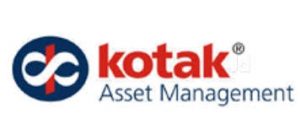We spend a lot of time thinking about the world and all the different cross currents that exist to generate insights that may lead to profitable portfolio ideas. To be successful, we must sift through a continuous stream of evolving data points, seeking relevant signals from all the noise. In my experience, more data is not always better. However, some may find the noise more comforting, particularly if they substitute the noise for the actual knowledge of things.
These days all of us, seem almost entirely focused on uncertainty rather than promise. Perhaps it is social media connecting everybody, which has ironically made societies and people ever more anxious, extreme and unhappy. Such matters are beyond the scope of this commentary, but markets are a social construct, so perhaps they are not without relevance.
It has been difficult to remain sanguine and not get caught up in the tumult, but as we all know, that is when people typically do stupid things. That’s the point of having a strong philosophy and process — it provides a solid anchor when all is chaos. Investors should build their portfolio focusing on what is in their control i.e. owning quality businesses at reasonable valuations with earnings growth visibility.
Guide to successful investing = How to Stop Being Your Own Worst Enemy
The most overlooked aspect of investing is “Behavior”. Instead, we focus on intelligence, timing, forecasting, and a host of other things we believe carry more weight in the returns we earn. Some of it matters, but not nearly as much as we hope. As Ben Graham has said “For indeed, the investor’s chief problem — and even his worst enemy — is likely to be himself.” If you can overcome yourself, you’ll be better off than most investors.
Humans have been hardwired over the centuries with quick natural responses that enhanced our survivability. Thousands of years ago, survival required focusing on what’s around the corner instead of what’s far off in the distance. So we became great at leaping to the first conclusion rather than thinking things through. That works great if we want to avoid being mauled by an animal, but works terribly if we want to survive in the stock market. Our natural tendencies still have some uses. But when it comes to investing, these biases drag down return performance. Sharing a few popular behavioral biases often repeated by investors.
- Empathy Gap — we overestimate our intellectual abilities and underestimate our emotional drive.
- Confirmation Bias — we are more likely to look for information that agrees, rather than disagrees with our conclusions, beliefs, and decisions.
- Narrative Fallacy — we try to give meaning to random series of events or facts by weaving a story around it.
- Myopia — we have an extreme focus on the short term.
- Self-Attribution Bias — we see success as the result of skill and failure as the result of bad luck or we might even blame it on someone else.
- Hindsight Bias —After knowing the outcome, it was more easily predictable.
- Social Pain — we find it uncomfortable to go against the crowd.
- Loss Aversion —A short-term focus makes loss aversion worse since the randomness of markets in the short term can deliver brief periods of paper losses at any time. So stop constantly checking your portfolio!
- Disposition Effect — we tend to sell winning investments and hold on to losing investments in the hopes of a recovery and are worse off for it.
- Outcome Bias — we tend to judge past decisions based on the quality of the outcome rather than the quality of the decision.
Most people believe these biases don’t apply to them. As if it wasn’t hard enough, we’re blind to our own biases. The first step is humility. It helps get around the bias blindness. Next is to build better “Behavior” into your investment approach. Using simple rules or checklists will help reinforce it. Changed behavior requires a change in habits. Changing habits work much like compounding. Small gradual improvements, over time, pay off in big ways. Then focus on the process.
“The key is not to predict the future, but to prepare for it.”
At the end of the day, the macro may deteriorate, political winds will blow as they will, and the global opportunity set may shift but, ‘Earnings are Still like Gravity’. We suggest in times of volatility to add to equities and Stay in the Game by extending your investment horizon. Stop waiting for the one perfect moment that might never arrive. Prepare by building your portfolio exposure to high quality companies with long runway growth opportunities and sustainable moats underpinning good visibility on earnings/cash flow growth. Investors should position themselves to leverage the potential structural-growth opportunities that our markets have to offer keeping in mind that the journey to sustainable returns should be a marathon not a sprint.


